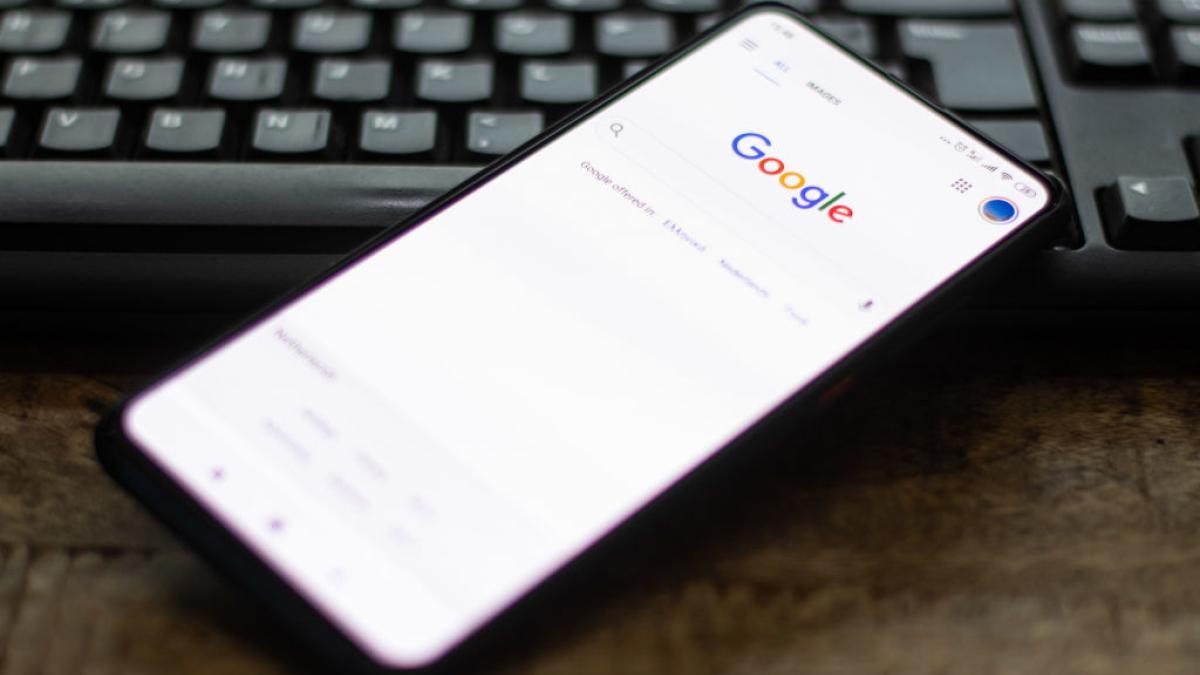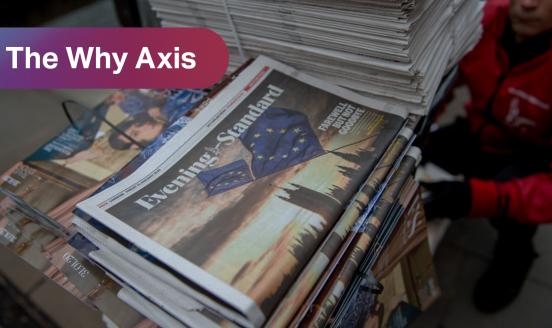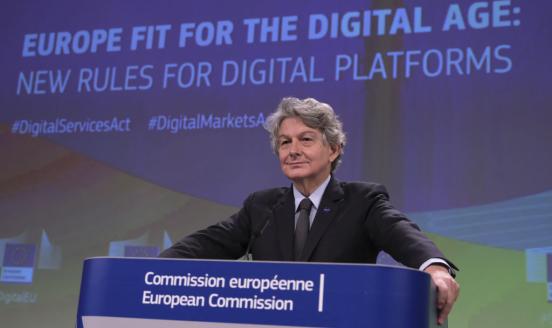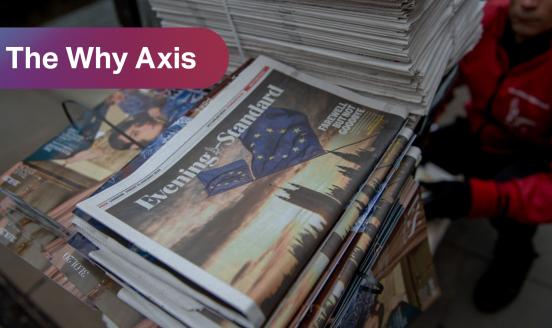Digital Market Act designations: the interoperability of Google Android
The European Commission has taken an intelligent first step in enabling competition to Google Android and Google Play Services

On 6 September, the European Commission issued decisions on designation of core platform services (CPS) under the European Union’s Digital Markets Act 1 //digital-markets-act-cases.ec.europa.eu/gatekeepers. . Google’s mobile operating system was designated as a CPS (European Commission, 2023), as expected given the large number of users it serves. Once designated, a CPS must comply with the DMA’s list of rules; the determination of exactly what is inside the CPS versus outside it can be consequential. The Commission has chosen a definition of the Google Android CPS that allows new device makers and app-store providers to capitalise on existing network effects, which will promote contestability.
A reminder of the problem
Google’s Android operating system (OS), code that enables a smartphone or tablet to operate and apps to run properly, is currently found in the Android Open Source Project and Google Play Services, a collection of software functionalities. Google packages Google Play Services together with the Google Play Store, but the function of the store is quite different, being simply app distribution. By keeping important Google Android functionality within the proprietary Google Play Services and omitting it from the open-source license, Google has been able to leverage access to its monopoly operating system. It does this by making a device maker’s access to Google Play Services conditional on protection from competition in markets that are important to Google, including search, browsers, app stores, maps and video.
Using this strategy Google lessens competition for its services, including Google Search, Chrome, Google Play Store, Google Maps and YouTube. In much of the world, Google requires device makers (or original equipment manufacturers, OEMs), if they wish to install Google Play Services, to exclusively preinstall these critical Google apps, make them defaults, relegate competitors to those apps to back pages, and not support competing versions of Android.
OEMs agree to these conditions because they know that users will not buy a device that does not give them access to a rich set of (functioning) apps. A device without Google Play Services will not run most apps; they simple fail and close. This lack of functionality has been a significant barrier to entry of competing app stores. Consumers will not buy a device with an app store that does not have developers on the other side of the two-sided market. In principle, developers could write for the open-source OS, but network effects are strong; developers want to develop apps for the OS used by many consumers, while consumers want the OS that has the most apps.
Up to now, OEMs installing a rival app store, or users attempting to download apps through a rival app store, have encountered this problem and have not had functioning products unless they also install Google Play Services. An OEM that does this but also tries to offer a rival app store runs into the web of contracts requiring the default to be the Google Play Store and the rival store be placed on a later page, while the rival’s performance is degraded relative to that of the Google Play Store, and Google incentivises developers to not use the rival. Controlling access to this critical interface gave Google powerful leverage over developers and the OEMs it used to obtain all of these valuable concessions: preinstalled default positions for its app store, search and the like. Excluding rival operating systems, app stores and search engines has resulted in market power that has in turn permitted the platform to extract fees from business users and end users, to control innovation and to continue to exclude rivals.
In theory, these contracts were prohibited in the wake of the 2018 European Commission Google Android case, although Google is widely thought to have evaded the prohibition rather successfully 2 //techcrunch.com/2018/10/16/google-tweaks-android-licensing-terms-in-europe-to-allow-googleapp-unbundling-for-a-fee; Natasha Lomas, ‘Google Still Claimed to Be Blocking Search Rivals on Android, Despite Europe’s Antitrust Action’, TechCrunch, 18 December 2018, https://techcrunch.com/2018/12/18/google-still-claimed-to-be-blocking-s…. . The Android prohibitions also required Google to let consumers select a default search engine through a choice screen, instead of being assigned one by Google or the OEM. The literature shows that Google also evaded this requirement rather successfully (Ostrovsky, 2023). The antitrust case record as a whole does not emphasise that distinguishing between the Google Play Store and Google Play Services is a critical factor in understanding the market power of the ecosystem.
The designation
The EU Digital Markets Act (DMA) reinforces and expands both of the Google antitrust commitments. Article 6(3) of the DMA requires choice screens at first use of the most important Google apps, while throughout the law there is a great deal of emphasis on choice architecture being effective and neutral. Circumvention using dark patterns, or exploitative user-interface designs that lead to decisions against the user’s interest, is explicitly banned
3
A dark pattern is a user interface that has been crafted to trick users into making choices the user would not make if presented with a neutral choice environment.
. Article 6(3) requires that a user can “easily change” a default they don’t want and permits rivals to ask to become a user’s default. Article 6(7) protects the technical degrading of rival app stores by requiring that they have access to the same OS hardware and software functionality without charge. The definition of the OS is obviously critical to making that rule effective. This is where the designation decision comes in.
The European Commission took an important step forward in creating contestability in both search and mobile operating systems with the definition it used in the designation of Google Android. The relevant finding is stated clearly in the summary of the decision
4
The full decision (European Commission, 2023) makes the same point in paragraph 165 and the surrounding text. “Finally, as regards Alphabet’s middleware, the Commission notes that, based on the information available to it, it cannot be excluded that some of the operating system features of Google Android are included in or require Alphabet’s middleware in order to function, such as certain elements of Google Play Services. With regard to Google Play Services, for example, the Commission notes that virtually all of the devices that implement and are enabled by Google Android in the European Economic Area (“EEA”) also make use of Google Play Services126 and Alphabet itself describes Google Play Services as ‘a core system software that enables key functionality on every certified Android device’. Therefore, Alphabet’s middleware, insofar as it contributes to controlling the basic functions of Google Android tablets and smartphones and to enabling software applications to run on them, thereby ensuring an effective functioning of Google Android, should be considered part of the operating system CPS Google Android. References to ‘Google Android’ should therefore in the remainder of this Decision be understood to also cover Alphabet’s middleware as defined above.”
:
“With respect to Alphabet’s operating system Google Android, the Commission designates Google Android and Alphabet’s related middleware (and in particular Google Play Services – not to be confused with the app store Google Play) as a single CPS insofar it contributes to controlling the basic functions of Google Android tablets and smartphones and to enabling software applications to run on them, thereby ensuring an effective functioning of Google Android.”
With this designation, the Commission defines the code that constitutes the Google Android operating system by whether third-party apps can ‘effectively function’ on it. The open-source version of the Android Open Source Project (AOSP) does not contain some of the important functionalities that are used by app developers. If the CPS defined by the Commission were only AOSP, it would not achieve the objective of the DMA, which is to open up platform network effects so they can be used by entrants. The Commission’s designation is a step forward in the enforcement of the DMA because once a definition of the CPS is based on functionality, it is robust to technological change as the OS evolves. In addition, it is robust to choices by Google to split off further pieces of the OS, name them something different, and put them in another place in the ecosystem. By using a definition that captures the indirect network effects, the DMA can keep the platform contestable.
Entry under the DMA
The DMA’s definition of the Google Android CPS makes it possible for a user to take advantage of rights under Article 6(4) to both install and designate a rival app store as the default on an Android phone. A user could also uninstall the Google Play Store without worrying whether the apps on the handset would continue to function. This in turn has powerful implications for the operation of indirect network effects on Google Android devices. Rival app stores could then take advantage of the indirect network effects of the Google Android CPS because, at the moment of entry, they will already have a large installed base of developers available. App store access to those network effects promotes contestability. By joining a network that already has many users and many developers, a rival app store or payment method is well-positioned for adoption by both sides. This will counter the problem that, being unable to take advantage of indirect network effects, even stores backed by significant industry players have failed entirely or remain tiny
5
//www.fastcompany.com/3039887/under-fire. On competing app stores see for example Ron Amadeo, ‘Google Wants Samsung to Kill Bixby, Galaxy App Store’, Ars Technica, 29 July 2020, https://arstechnica.com/gadgets/2020/07/google-wants-samsung-to-kill-bi… (“Samsung’s Galaxy App store is used to update Samsung’s core Android apps that ship with a phone, but there’s really no reason to keep it around for most countries”).
.
To appreciate the significance of the change in the Android environment, consider how the entry into the market in 2014 of the Amazon Fire smartphone would likely have played out under this definition of the Google Android CPS, combined with DMA rules
6
Amazon introduced the Fire tablet in 2011 using AOSP plus proprietary software from Amazon and the Fire phone in 2014. The Fire phone was discontinued in 2015.
. The Fire phone could have run Google Android instead of the AOSP operating system. In all probability the Fire phone would have been sold with an Amazon App store (instead of the Google Play Store) to advance Amazon’s business model. Since all authorised Android apps would have functioned normally when obtained through the Amazon store, this would be of no technical concern, even when the Google Play Store was not installed. Consequently, the Amazon store could have gained from indirect network effects and recruited developers into its store. Developers might well choose to distribute apps through a channel with access to a unique set of users and perhaps offering more benefits to developers (for example, a fee percentage below 30 percent). This is even more likely if the developer does not need to invest additional resources in customising the app for the uncertain new channel, but can simply distribute an authorised app they have created already.
Because the DMA mandates access to the Google Android CPS, there is no longer any need for a device maker to bargain for Google Play Services. The device designer can include and arrange any set of apps and functionalities they think will attract users or will fit with their business model (subject to the rules in the DMA covering CPSs). Users might like or dislike the value proposition of the app store and device, but not because of a lack of compatible apps. If Google chose not to distribute Gmail through the Amazon app store, for example, Fire users could sideload Gmail, or install the Google Play Store and obtain apps there. Under the DMA, Fire users would easily be able to change the default app store, in addition to being unrestricted in their use of more than one store. The key takeaway is that if such a device had an attractive value proposition for users, app-store network effects would not prevent it from succeeding in the marketplace.
Wider impact
The Commission’s definition of Google Android may be useful to the Department of Justice in the United States as it struggles to come up with remedies in its ongoing antitrust trial against Google in Search (in the event the government prevails) 7 //www.theverge.com/23869483/us-v-google-search-antitrust-case-updates. . If the DOJ repeats the remedies the European Commission tried between 2018 and 2022, it is likely to get a repeat of the changes in Europe: minimal. But a clear and practical definition of the operating system might lessen circumvention of behavioural US remedies, even if they take the same form. Contracts between Google and OEMs are often global, or close to global, in scope. Prohibiting Google from tying its search and browser to its correctly-defined OS may be more effective when applied in both the US and Europe than prohibitions in Europe alone.
The inclusion of Google Play Services in the CPS in Europe is critical to freeing OEMs from the bonds of the previous contracts. These contracts, along with control over proprietary network effects, blocked entry of both rival AOSP-based operating systems and search engines. It is not clear how many firms in either business the market can support, but dismantling the most significant barriers to entry is the first step in finding out.
References
European Commission (2023) ‘Decision designating Alphabet as a gatekeeper pursuant to Article 3 of Regulation (EU) 2022/1925 of the European Parliament and of the Council on contestable and fair markets in the digital sector’, C(2023) 6101 final, available at https://ec.europa.eu/competition/digital_markets_act/cases/202344/DMA_1…
Ostrovsky, M. (2023) ‘Choice Screen Auctions’, American Economic Review, 113 (9): 2486-2505



